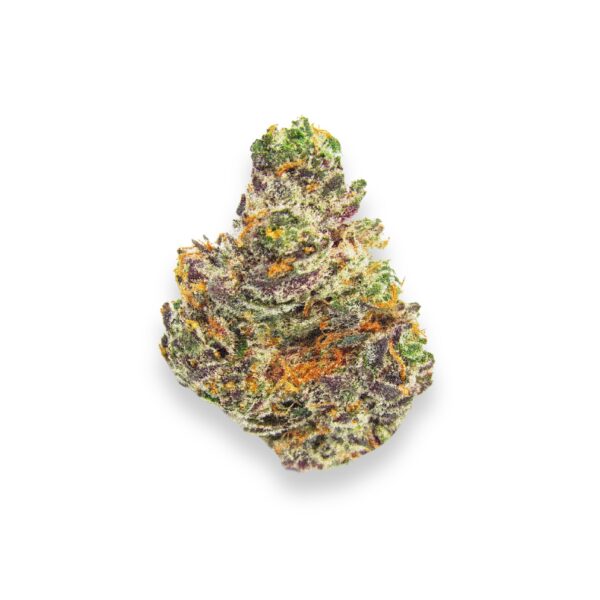
Hybridised strains, a dynamic fusion of sativa and indica genetics, have become the cornerstone of the cannabis industry, captivating enthusiasts with their diverse effects and flavors. In this exploration of hybrid strains, we delve into their creation, characteristics, cultivation, and the evolving landscape of the cannabis market.
This post is intended as information and for general knowledge only. It is not a substitute for medical advice, diagnosis, or treatment. It is recommended that you talk to a healthcare professional about this before introducing cannabinoids into your daily routine (especially if you have been diagnosed with any medical conditions or are under any medication). It is not recommended to drive or operate any machinery when using hemp-derived products. Use responsibly!
Understanding Hybrid Cannabis Strains
Definition of Hybrid Strains
Hybrid strains, as the term suggests, result from crossbreeding different cannabis varieties. This intentional mingling of sativa and indica genetics aims to harness the desirable traits of both parent strains, creating a new and unique offspring.
Crossbreeding Process and Genetic Composition
The crossbreeding process involves carefully selecting parent strains with distinct characteristics. Dominant and recessive traits play a crucial role, influencing the expression of specific features in the hybrid. The genetic composition of hybrid strains, a delicate balance between sativa and indica genetics, contributes to the variety of effects experienced by users.
Hybridization Techniques
Traditional Breeding Methods
Historically, hybrid strains were developed through selective breeding and controlled pollination. This traditional approach focused on phenotype selection, where plants displaying desired traits were chosen as parents for the next generation. This method, though time-consuming, laid the foundation for many iconic hybrid strains.
Modern Techniques
In the modern era, genetic engineering and marker-assisted breeding have accelerated the hybridization process. Genetic modification allows for precise manipulation of traits, while molecular markers aid in identifying desirable genetic characteristics. However, these advancements raise ethical considerations and controversies within the cannabis community.
Key Characteristics of Hybrid Strains
Diverse Effects and Flavors
One of the most enticing aspects of hybrid strains is their diverse range of effects and flavors. From the energizing uplift of sativa to the relaxing body high of indica, hybrids offer a balanced experience. The psychoactive and therapeutic effects vary, making hybrids suitable for both recreational and medical users.
Balance of Sativa and Indica Properties
Hybrids can lean towards sativa or indica dominance, influencing the overall effects. Some hybrids provide an invigorating cerebral experience, while others offer profound relaxation. The balance achieved in hybrid strains contributes to their widespread appeal among cannabis consumers.
THC and CBD Content
Hybrid strains exhibit variability in THC and CBD content, allowing users to choose based on their desired effects. Some hybrids boast high THC for a potent experience, while others offer a balanced THC to CBD ratio, appealing to those seeking therapeutic benefits without an overwhelming psychoactive impact.
Popular Hybrid Strain Varieties
Iconic Strains and Regional Popularity
The cannabis market is replete with iconic hybrid strains, each with its unique origins and characteristics. Strains like Blue Dream, OG Kush, and Apple Fritter have achieved global recognition, yet their popularity can vary regionally and among different demographics.
Specific Strains and Unique Properties
Let’s delve into the specifics of a few renowned hybrid strains:
Blue Dream

Originating from the crossbreeding of Blueberry and Haze, Blue Dream is celebrated for its sweet, berry-like aroma and balanced effects. Its sativa-dominant genetics provide a euphoric high, complemented by the subtle relaxation of indica influence.
OG Kush

A legendary strain, OG Kush, is a hybrid with mysterious origins. Known for its earthy and piney aroma, OG Kush delivers a powerful euphoria coupled with deep relaxation. Its balanced effects have contributed to its enduring popularity.
Apple Fritter

A newer entrant, Apple Fritter, is a hybrid created by crossing Sour Apple and Animal Cookies. This strain delights users with its sweet and fruity flavor profile, accompanied by a potent and uplifting high.
Cultivation Tips for Hybrid Strains
General Guidelines
Cultivating hybrid strains requires attention to environmental conditions, nutrient levels, and lighting. These plants thrive in a balanced environment, and proper care enhances their potential for robust growth and resinous buds.
Indoor and Outdoor Considerations
Cultivation practices may differ for indoor and outdoor settings. Indoor cultivation allows for controlled conditions, while outdoor cultivation capitalizes on natural sunlight. Growers must weigh the advantages and disadvantages of each method to optimize plant health and yield.
Maximizing Yield and Potency
To maximize yield and potency, cultivators employ techniques such as pruning and training. These practices enhance light exposure and airflow, promoting healthier plants. Additionally, understanding factors influencing cannabinoid and terpene production is crucial for achieving desired effects.
Medical and Recreational Applications
Therapeutic Benefits
Hybrid strains offer therapeutic benefits, addressing conditions ranging from chronic pain to anxiety. The synergy between sativa and indica effects allows patients to tailor their cannabis use to specific medical needs, providing relief without excessive sedation.
Strain-Specific Medical Applications
Scientific studies and anecdotal evidence support the medical efficacy of specific hybrid strains. For instance, strains with balanced THC to CBD ratios may be particularly beneficial for managing conditions like epilepsy or chronic pain.
Recreational Appeal
On the recreational front, hybrid strains cater to diverse user preferences. Their versatility makes them suitable for social settings, creative endeavors, or relaxation, appealing to a broad demographic of cannabis enthusiasts.
Challenges and Considerations
Genetic Stability
Maintaining genetic stability in hybrid strains poses challenges. Genetic drift and instability may occur, impacting the consistency of effects. Preserving phenotype stability becomes crucial in ensuring that the desired traits persist across generations.
Consistency in Effects
Consumers expect consistent experiences with each use of a particular strain. However, variations in cultivation practices and environmental factors can lead to differences in effects between batches of the same hybrid strain, necessitating industry standards for reliability.
Legal and Regulatory Landscape
The legal and regulatory landscape surrounding hybrid cannabis cultivation is complex and varies globally. Navigating these frameworks poses challenges for growers and distributors, influencing the availability and marketing of hybrid cannabis products.
Future Trends in Hybrid Cannabis
Advancements in Hybridization Techniques
As technology advances, hybridization techniques are likely to evolve. Innovations in breeding technologies, coupled with a focus on sustainable practices, may shape the future of hybrid strains. Environmental considerations may drive the industry towards eco-friendly hybridization methods.
Novel Hybrid Strains
The future promises the development of new hybrid strains with novel characteristics. Breeders may experiment with flavors, aromas, and effects, guided by consumer feedback and emerging trends. This continuous evolution reflects the dynamic nature of the cannabis market.
Market Trends and Consumer Demands
Market trends and consumer demands are pivotal in shaping the future of hybrid cannabis. As laws and social attitudes evolve, the demand for specific hybrid characteristics may shift. Adapting to these changes will be crucial for cultivators and businesses to thrive in the competitive cannabis landscape.
Conclusion
In conclusion, hybridised strains stand at the forefront of the cannabis industry, offering a vast spectrum of effects and flavors. Their creation, cultivation, and applications in both medical and recreational contexts contribute to their enduring popularity. As the cannabis market continues to evolve, hybrid strains are poised to play a central role, bridging the gap between tradition and innovation. The journey of hybrid cannabis, marked by its rich history and promising future, is a testament to the dynamic nature of this fascinating plant.
Also Interesting:
Best Strains for Female Arousal
Best Strains for Male Arousal